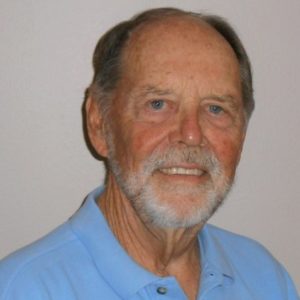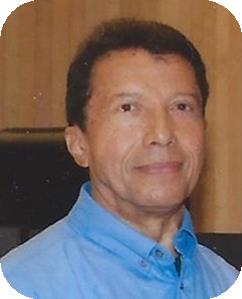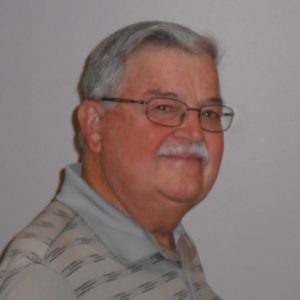June 2021
Honoring Yesterday – Protecting Tomorrow
Vol. 52, No. 6
What’s Inside?
Virtual RESDC Presentation
President’s Message
RESDC Board Nominations
Recent Events
Pension Facts
See’s Candies Discount Update
Save The Date, Prevent Financial Abuse
Bits and Pieces
What Did You Notice In The Pandemic?
Senators File To Fix Social Security
Flag Day Luncheon Will Not Be Held
Welcome New Members
June Calendar of Events
8—(Tues.) Virtual RESDC-Aging & Independence
Via Zoom Web Conferencing, 10:00 a.m.
10—(Thurs.) RESDC Board of Directors Meeting
Via Zoom Web Conferencing 9:30 a.m.
17—(Thurs.) SDCERA Board of Retirement Meeting
9:00 a.m.
View the NETWORK
as a printable PDF
Are you on social media?
Stay connected with us!![]()
![]()
QUOTE OF THE MONTH
Certain things catch your eye, but pursue only those that capture the heart.
▪ Ancient Indian Proverb
VIRTUAL RESDC PRESENTATION COUNTY OF SAN DIEGO, AGING & INDEPENDENCE SERVICES MEDICINES, ALCOHOL, AND TOBACCO
RESDC has partnered with Aging and Independence Services to bring you our next in a series of presentations throughout 2021!
When: Tuesday, June 8th at 10:00 a.m.
Where: Online Zoom Meeting Room
Unable to attend??? Visit the RESDC YouTube page by clicking here after June 8th where you can watch a recording of the presentation.
Program: The presenter, Hazel Quinones, is an Outreach and Education staff member of the Health and Community Engagement Team at the County of San Diego, Health and Human Services Agency, Aging & Independence Services.

Hazel Quinones
Hazel has her bachelor’s degree in social work and communication studies, and she has her master’s degree in social work. She has worked with diverse populations – children and families, adults, and now working with older adults, persons with disabilities, and caregivers. Hazel has a passion for helping others through education and community involvement. She also enjoys caring for her family, hiking, and hopes to travel more.
This presentation, Medicines, Alcohol, and Tobacco, provides awareness of medicines that do not mix well with other prescriptions, over-the-counter medications, herbal/vitamin supplements, and alcohol. Includes information on alcohol usage and a self-assessment tool. Tobacco and smoking cessation resources are also provided. Emphasis is placed on the importance of recovery and prevention.
RSVP: To learn more about this presentation, including registration, visit www.resdc.net/events or you can call our office at 619-688-9229. Our staff is working remotely and will return all calls as soon as possible. We thank you for your understanding. □
PRESIDENT’S MESSAGE
By Stan Coombs
 Welcome to another edition of THE NETWORK.
Welcome to another edition of THE NETWORK.
For more than a year the RESDC Board of Directors and staff have conducted a modified member activity program that complies with restrictions of the California Department of Public Health and their color-coded COVID tier system. It ranged from yellow, which allows an almost normal lifestyle, to purple.
The Purple Tier, assigned to San Diego for most of that time, requires closed RESDC offices, remote work-from-home-arrangements for RESDC staff, outdoor-only social gatherings with very limited attendance, and bans live, seated, indoor events. Just to ensure the safety of members, we completely restricted all RESDC membership events to Zoom gatherings until the COVID pandemic case count sufficiently diminishes.
Despite these restrictions we still provided free virtual Zoom presentations for members, featuring experts from various fields. We closely followed and reported discussions from monthly Board of Retirement meetings and from collaborative sessions with county retirement leaders – including the new SDCERA Chief Executive Officer – and were heartened by positive monthly financial reports coming from the SDCERA Chief Investment Officer, despite the pandemic’s impact on the general economy.
We also held regular Zoom Board of Directors and committee meetings, with RESDC board members learning to participate from home.
And then on Wednesday, April 7th, California Health Department rules changed. Based on seriously reduced COVID cases in San Diego, we were shifted to the less restrictive “Orange Tier.”
That didn’t remove, it only slightly lessened those restrictions. Offices remain closed with staff still working from home and meetings still limited to Zoom sessions, and social gatherings still restricted to the outdoors with slightly increased attendance allowed. But some live indoor events may now be possible with very restricted attendance, and we’re starting a comprehensive review of plans to return the organization to something near normal as soon as the COVID pandemic and tier restrictions ease a bit more and we’re allowed and comfortable doing so.
Meanwhile, since we’ve already talked a lot about this particular pandemic, let’s talk a little about pandemics in general.
It’s first worth noting what the term “pandemic” means. Wikipedia defines a pandemic as the rapid spread of disease to a large number of people in a given population in a short period of time, and then refines that to omit simple outbreaks of non-communicable disease, but includes large scale concentrations in excess of specific infection rates of 15 cases per 100,000 people or more for two consecutive weeks.
History leads to the conclusion that pandemics are inevitable. Indeed, Wikipedia’s computerized chronology of pandemics includes no less than 252 recorded instances between the first listed, Babylonian influenza epidemic in 1200 BC, and the most recent listed, 2020 Nigeria yellow fever epidemic, described as still underway.
That covers 2,200 years, nearly a quarter of a millennium, implying pandemics occur every 8.7 years on average. In fact, they’re recorded more frequently in recent times. Many of the pandemics on that list killed multiples of millions, the two largest, the Black Death epidemic in 1346 and the U.S. Influenza epidemic in 1918, are credited with the loss of 200 million and 100 million souls respectively.
So as Dhruv Khullar, M.D., Assistant Professor of Health Policy and Economics at Weill Cornell Medical College asks in the title of his recent New Yorker article, “What Will It Take To Pandemic-Proof America.” He responds to his own question by raising a more fundamental issue, “. . .whether we’ll embrace the policies that could protect us next time.”
Khullar notes many pathogens are more deadly than SARS-CoV-2, which causes COVID-19, are reported to be more transmissible than SARS-CoV-2, more difficult to vaccinate against and for which there are as yet no vaccines.
He suggests that our mobile population shows that mechanisms for spreading infection are built-in to our international lifestyle, and says we shouldn’t squander the chance to prepare for the next inevitable pandemic, but to act now. He reminds us of our recent U.S. COVID experience, when testing was slow or unavailable, when national stockpiles of emergency equipment were woefully short, and when federal and local health agencies were underfunded and economies suffered from forced quarantines and closures.
Finally, Khullar describes three systemic weaknesses in the U.S. health system that need attention. He calls first for vastly improved “disease surveillance,” the adequately funded identification and tracking of pandemic outbreaks before they are out of control, through a single national platform that brings in data from every state in an organized way. He calls for the correction of “deep vulnerabilities” in America’s medical supply chains, to ensure adequate personal protective equipment, medical equipment and medications. And finally, for the joint, organized development of vaccines and treatment protocols by universities and industry, for treating the most dangerous pathogens.
Judging from the past year. . .sounds like a plan! □
RESDC BOARD OF DIRECTORS CANDIDATE NOMINATIONS ARE OPEN
By Carlos Gonzalez, Elections Committee Chair
 The terms of four (4) directors, as well as President and Second Vice President will end on 12/31/2021. Accordingly, we are accepting applications, as well as nominations based on established qualifications for the new term, which runs 1/1/2022 through 12/31/2023.
The terms of four (4) directors, as well as President and Second Vice President will end on 12/31/2021. Accordingly, we are accepting applications, as well as nominations based on established qualifications for the new term, which runs 1/1/2022 through 12/31/2023.
Changes that impact San Diego County retirees require active participation by County retirees. RESDC encourages all members to contribute their talents for the benefit of the entire membership, so that our organization continues strong and productive.
We need prospective candidates who are able to volunteer time and effort to promote RESDC’s goals, attend monthly board meetings, and be present at six general membership meetings each year. One term as director is usually enough motivation to escalate your participation in the Board of Directors and could lead to a position as an Officer.
This year, again, active employees, registered as Associate Members, are eligible to run in the election. According to recently enacted Bylaws, participation is restricted to the election of one Associate Member to an open position of Director (Associate Members are not eligible to run for Officer seats).
Interested RESDC members must file a candidacy statement (200 words or less), with a summary of your background and work experience to: RESDC, 8825 Aero Drive, Suite 205, San Diego, CA 92123, or by email to resdc@resdc.net, by Monday, August 2, 2021. Please state your candidacy for one of the following: RESDC Director (4 seats); President or Second Vice President. Only current and past board members are eligible for the President and Second Vice President seats.
If you have any questions, please contact our office by phone at (619) 688-9229 or by email at: resdc@resdc.net. □
RECENT EVENTS
Congress Considers ‘Secure Act 2.0’ with a New Round of Retirement Plan Fixes: Retirement security is again on the congressional agenda. The Ways and Means Committee of the U.S. House of Representatives recently voted unanimously to advance the ‘Securing a Strong Retirement Act’ for future consideration by the full chamber.
As summarized by the lawmakers, the legislation will enable millions more workers to build savings through employer-provided retirement plans. A key feature is an automatic enrollment provision for new retirement plans. Auto-enrollment is a proven method for increasing worker participation. Employees who are automatically enrolled can opt out at any time. The bill also increases a tax credit for small business owners to encourage them to offer their employees a retirement plan.
“The retirement crisis in America is real and will only get worse without easier pathways to saving and encouraging workers to start planning for retirement earlier in life,” said Ways and Means Committee Chairman Richard Neal, D-Mass, and Rep. Kevin Brady, R-Tex., the committee’s ranking Republican, in a joint statement. “This legislation expands automatic enrollment, simplifies many retirement plan rules, and strengthens small businesses’ ability to offer workplace retirement plans, to make it easier for Americans to plan for their golden years.”
They added, “We are now one step closer to improving Americans’ financial security and hope to see this measure move through Congress and be signed into law in short order.” To view a summary and full text of the bill, visit: https://waysandmeans.house.gov/.
Federal Court Order Rules in Favor of CalSavers Retirement Savings Program: The United States Court of Appeals for the Ninth Circuit recently affirmed the United States District Court for the Eastern District of California’s dismissal of claims by a group that sought to block the CalSavers Retirement Savings Program, a program designed to help millions of private sector workers in California prepare for retirement.
“We are very pleased with the Court’s ruling,” said California State Treasurer Fiona Ma, who chairs the CalSavers Retirement Savings Board. “CalSavers is a simple solution to level the playing field for workers who for too long haven’t had access to workplace-based retirement plans. There is no reason to deny millions of hardworking Californians access to this savings program when the alternative is to see them work.
Executive Director Katie Selenski reported that more than 10,000 employers have registered since the program launched on July 1, 2019 and 340,000 workers have enrolled. More than 140,000 individuals already have actively funded accounts amounting to nearly $68 million. “We’re not even halfway through our rollout and we’re already proving that when given an easy, automatic, portable option, workers across the income spectrum will save for their futures,” Selenski said. To learn more about the CalSavers program, visit: https://www.calsavers.com/ . □
PENSION FACTS – What’s Your Share of Public Pension Debt? Huh?
By Chris Heiserman, Director
 You may have seen or heard the latest strategy from critics decrying the cost of public employee pensions – highlighting the hypothetical bill due from every household in every jurisdiction to cover government workers’ retirement benefits.
You may have seen or heard the latest strategy from critics decrying the cost of public employee pensions – highlighting the hypothetical bill due from every household in every jurisdiction to cover government workers’ retirement benefits.
Public pension detractors seem to be happy with their latest campaign trying to brand public retirement systems as too costly. The idea of assigning the long-term cost of these benefits for public employees to each family or individual is catching on; numerous groups and organizations dedicated to eliminating defined benefit pensions (found predominantly in the public sector) are picking up the baton and racing to publish reports and send out news releases.
A key player on the anti-public pension team is Joe Nation, a researcher, professor and former California State Assemblyman who is now affiliated with Stanford University. He launched a website in 2013, the California Pension Tracker, which offers annual pension data on counties, cities and special districts. He said in a recent interview that the work involves “scraping” data from different sources and adding value with metrics like “pension debt per household.”
Another contributor to the chorus of public pension criticism is the financial watchdog group Truth In Accounting (TIA), based in Illinois and self-described as non-partisan and non-profit. It publishes an annual “Fiscal State of the States” report that analyzes financial data and ranks states according to a measure called “taxpayer share of debt.” (Their report is based on 2019 statistics, before the pandemic). Here’s a brief summary of their approach: If states don’t have enough money to pay their bills, TIA takes the amount of funding needed to cover all liabilities and divides it by the estimated number of state taxpayers. They dub this result simply the “Taxpayer Burden” and rank states accordingly.
In this 2019 report, TIA determined 39 states were unable to cover all their expenses and noted that unfunded worker retirement liabilities was the largest contributing factor in state-level debt.
Then there’s former State Senator John Moorlach of Orange County, a certified public accountant (CPA). As I reported last month, Moorlach assembles “financial soundness” rankings for California counties and cities. In his November 2020 rankings for the state’s 58 counties, he calculates a metric that displays a county’s Unrestricted Net Position (debt) on a per capita basis and compares his rankings for both 2010 and 2019. For example, according to Moorlach San Diego County’s fiscal health (like all 58 counties in 2010) was positive per capita ($166, ranked 31st). In the 2019 analysis he reported that San Diego’s rank improved to 8th but individual county residents were apparently by then on the hook for a $412 share of the County’s debt.
If this is confusing to you, you are not alone. Before we try to make sense of these calculations, let’s look at a couple of additional examples. According to one article from 2019, Pension Tracker said California’s per household unfunded pension liabilities amount to $86,320 – second only to Alaska’s $102,084. The Pension Tracker website currently lists California’s pension debt per household (on a market basis) as $81,634.
Using a different reporting range, the Truth in Accounting group says the Taxpayer Burden for California equates to $21,000 for every state taxpayer. Frankly, I have no idea how to pull these disparate numbers into some sort of cohesive picture. However, I have several observations.
Admittedly, these public pension critics are right about one significant point. The unfunded liability issue for most public worker retirement plans is a real and important challenge. According to the most recent actuarial report for SDCERA, the total value of assets in our retirement fund was $13.72 billion as of June 30, 2020. The unfunded liabilities, the Unfunded Actuarial Accrued Liability (UAAL) remained at $4.0 billion.
This is certainly no small matter, but retirement systems plan for the long term and calculate what resources they will need to pay benefits 20 years from now. No one is contemplating sending invoices to every county resident for a share of pension benefit costs projected over the next two decades. That is ridiculous, but using the scare tactic of per capita or per household responsibility for future public pension obligations is a public relations strategy worthy of a paid political campaign consultant.
Per household pension debt is a headline these critics can apply to cities, counties, states, school and other special districts. The calculation is aimed at the long-term retirement benefit obligations of each jurisdiction based on conservative assumptions they make about investment returns. This makes the projected unfunded liability bottom line for each agency significantly larger than the numbers estimated by the jurisdictions themselves. (Returning to the Pension Tracker website, the per household debt of $81,634 for California becomes $27,187 using the assumptions made by the state retirement system).
An argument often raised by these critics is that public pension unfunded liabilities have not improved significantly despite the stock market run up of record returns. Once again, each retirement system has long term financing plans to cover future benefits of today’s public workers. Volatility in the market is built into those funding strategies and investment fluctuations are smoothed over a range of years so plan administrators can forecast a more consistent annual contribution level for both sponsors (government employers) and workers themselves.
Okay, I suppose there are still going to be those who look at the per household or per taxpayer statistic and it seems like a simple yardstick. Too simple, actually. Try the commonsense test. What is the makeup of the millions of California households included in figures used by say the state Department of Finance? Homeowners, renters – are they all state and local taxpayers? Are businesses and corporations included in the per taxpayer calculations?
Simple, yes. Logical, not so much. □
SEE’S CANDIES GROUP DISCOUNT UPDATE
RESDC members are entitled to a 10% group discount on selected items at the two See’s Discount Stores: 3751 Rosecrans Street, San Diego, 92110; and 1830 Marron Road, Carlsbad, 92008. You must ask the See’s sales team which items are selected. You need to show them your RESDC membership card for the discount. Be sure to mention that you are a member of Retired Employees of San Diego County. Occasionally a RESDC member is denied the discount by a clerk at these See’s stores. When this happens, be sure to clarify that you are not an active County employee, but you’re a member of RESDC. The county no longer participates in the See’s group discount program. If you’re still refused a discount, ask to speak to a store manager.
See’s has discontinued the sales of their one-pound paper gift certificates and they’ve switched to plastic gift cards instead. If you still have some of the paper gift certificates in your possession, rest assured they will still be honored at all See’s Candies shops.
RESDC will offer $25 See’s Candies gift cards to our members at a discounted price of $22 each. This is a $3.00 savings over the retail price.
Please note that we only accept checks for purchasing See’s gift cards. We are unable to accept cash or credit cards for See’s Candies gift card purchases at this time. The gift cards are redeemable at any of the See’s retail stores and for online purchases.
If you would like to purchase gift cards from RESDC, please address an envelope to RESDC, 8825 Aero Drive, Suite 205, San Diego, CA 92123. Enclose a check made out to RESDC for the number of gift cards you would like at $22 for each gift card. Be sure to include postage stamps so we can mail the gift cards to you. Enclose one stamp if purchasing less than five gift cards. If purchasing over five gift cards enclose 70 cents of postage. If purchasing over nine gift cards enclose 85 cents of postage. See the postage chart at: www.resdc.net/sees-candies-discount. We will supply the return envelope to put the gift cards into.
These new gift cards are redeemable online or at any See’s Candies shops. □
SAVE THE DATE VIRTUAL RESDC PRESENTATION
July 13, 2021 at 10:00 a.m.
County of San Diego, Aging & Independence Services “Don’t Get Hooked”: Preventing Financial Abuse, Scams, and Fraud
This presentation is for older adults and family caregivers on preventing financial abuse, scams, and fraud. Topics include: grandparent scams, sweepstakes and lottery scams, telemarketing scams, IRS and other governmental scams, and more! “Don’t Get Hooked” booklet and other resources provided.
RESDC continues our partnership with Aging and Independence Services to bring you another great presentation. Stay tuned to the July edition of THE NETWORK for more information including registration and Zoom Meeting Room details. □
BITS AND PIECES
John Cantor celebrated his 104th birthday on April 26th at his home in Rancho Bernardo with family, friends, and neighbors! John retired in 1979 from the County Clerk’s department where he was responsible for Superior Court exhibits. Before working for the County, John retired from the Navy with 30 years of service as Chief Warrant Officer 4.
Anne Thomas celebrated her 90th birthday in March! She was able to celebrate with some of her children and grand children at her son’s home in Orange County. Anne still lives in San Diego in her home of 46 years. She retired from Superior Court in 1990. □
WHAT DID YOU NOTICE IN THE YEAR OF THE COVID-19 PANDEMIC?
By Chris Heiserman, Director
It was unfortunate that most students pretty much lost a year of school; especially sad that high school seniors missed out on graduations, and young athletes at all levels had to forgo the exercise and thrills of sports competition. Tragically, many youngsters in vulnerable circumstances likely fell through the cracks, disconnecting from the traditional education system.
I believe we all felt somewhat lost and frustrated, even while real losses of American lives were piling up month after month. Shut in and shut down with new guidelines prescribing facial coverings and social distancing, avoiding group activities, we learned to communicate digitally and virtually via smart phones. We texted and shared photos via messaging, we Face Timed, we Skyped, we spent much more time on Facebook, and we Zoomed. Many could still work remotely from home during the pandemic, but most of us simply discovered that it was easy to connect with friends, family and organized groups over the internet via Zoom or webinars. Alternatives to binge-watching television, reading books, piecing together jigsaw puzzles and cleaning out closets or garages were out there.
It was (and still is) a crazy situation we are living through. Here are a few unusual things I realized along the way:
Car maintenance – I got emails from car dealers with vehicle maintenance reminders, but the car hadn’t logged anywhere near the mileage to need it. Gas prices were sometimes volatile, but the monthly cost of driving plummeted.
Masks – My wife and I had masks galore. We were gifted homemade masks, we bought extra single use face coverings, we ordered custom masks from charities, we purchased a package of KN-95 masks and started double masking. It’s actually been weeks since I left my car, approached the store entrance and realized I had forgotten my mask. A simple habit that seems to be making a big difference.
Take-out – We were pretty successful in regularly ordering take-out food from area restaurants to help them through the lean times of the pandemic.
Silver lining – We live next to a trailhead for a County open space preserve. Many local residents and families from surrounding communities discovered it was a great place to get some fresh air and exercise during the pandemic. Dog walkers, hikers, joggers and cyclists made good use of this public space. Many showed up almost daily.
DO YOU HAVE A PANDEMIC EXPERIENCE YOU’D LIKE TO SHARE? We’ll post it in one of the next NETWORKs. Send it via email to: resdc@resdc.net or mail to RESDC, 8825 Aero Drive, Suite 205 San Diego, CA 92123. □
ROMNEY, MANCHIN AND OTHER SENATORS AND HOUSE MEMBERS FILE LEGISLATION TO FIX SOCIAL SECURITY
CNBC has announced that Senators Mitt Romney (R) Utah, Joe Manchin (D) West Virginia and a bi-partisan group of 15 other senators and members of the House of Representatives have signed onto proposed legislation to fix Social Security and three other trust funds that are in financial trouble.
The funds include Social Security Old Age and Survivor’s Insurance, Social Security Disability Trust Fund, Medicare Hospital Insurance Trust Fund and the Highway Trust Fund. In some cases, the trust funds could exhaust their reserves within a few years, Social Security by 2032 when only 79% of benefits can be paid without funding changes. And that doesn’t take into account impacts of the COVID pandemic.
Romney introduced a similar bill before, now re-titled “Trust Time” and it is enjoying bi-partisan support.
For each endangered trust fund, the bill would create a rescue committee of 12 congressional members, CNBC reports, with a mandate to draft legislation within 180 days that will extend long-term solvency of the fund. Bills produced will get expedited consideration. Solutions considered to be available include cutting funded benefits in some form, or increasing revenues, which would mean more payroll taxes for employers and employees.
According to Shai Akabas, Director of Economic Policy at the Bi-Partisan Policy Center, “the longer changes are put off to improve the system’s solvency, the more dramatic improvements will have to be.” “I think the stalemate’s gone on for far too long.”
But not everyone agrees. Some think the proposed legislation is a way of cutting benefits. Max Richtman, CEO of the National Committee to Preserve Social Security and Medicare, reportedly described Romney’s plan as “a way to cut benefits and leave very little fingerprints from members of Congress on how that is done.”
“The bill would circumvent the normal legislative process where outside witnesses express their views,” he said. “Members of Congress should have the courage to have a discussion and debate. □
RESDC’S ANNUAL FLAG DAY LUNCHEON WILL NOT BE HELD THIS YEAR
In order to comply with the current Orange Tier for San Diego County, and prioritizing what is in the best interest of the health and well-being of our members, RESDC will not hold our annual Flag Day Luncheon this year. Currently, the Ronald Reagan Community Center is still not open for group events. We look forward to future opportunities for hosting the great events our members have enjoyed in the past. □
WECOME NEW MEMBERS
Melvin E. Dittman Jr.
Dawnella Gilzean, Public Defender
Alice L. Hatcher
Sharon A. Luke, Registrar of Voters
Wendy L. Martinez, Environmental Health
Irma Paredes Health, & Human Services
Kathleen T. Phillips
Jayne A. Richards
Georgina A. Romero, Probation
Paula M. Vicedo, Health & Human Services
The surviving spouse of a member is eligible for RESDC membership. For enrollment assistance, call (866) 688-9229. □
THE NETWORK is the official monthly newsletter of the Retired Employees of San Diego County, Inc. (RESDC), a private non-profit organization.
The information printed in THE NETWORK is believed to be from reliable sources. However, no responsibility is assumed by THE NETWORK for inaccuracies contained herein.
Business and Inquiries: Business matters and address changes may be recorded on our voicemail at any time, call (866) 688-9229. Please spell your name so the correct member record can be located.
Retired Employees of San Diego County, Inc.
8825 Aero Drive, Suite 205 | San Diego, CA 92123
Office Hours: 9 a.m. to 2 p.m. Monday through Friday
TELEPHONE: (866) 688-9229 Toll Free
FAX: (619) 688-0766
E-MAIL: resdc@resdc.net

